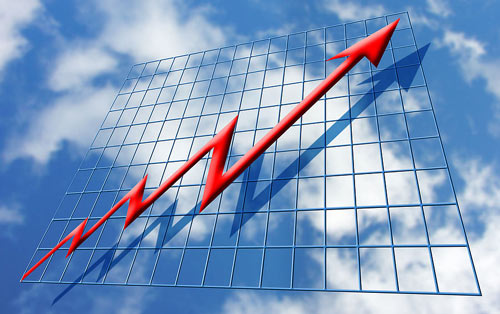
WASHINGTON - The U.S. economy added 209,000 jobs in July, according to government data released Friday, surpassing economists' expectations and suggesting the economy continues to thrive after an extended streak of job gains in recent years.
The unemployment rate ticked down to 4.3 percent, compared with 4.4 percent in June, and wages rose by 2.5 percent from the year before to $26.36 in July.
"It was pretty solid across the board," said Michael Feroli, chief U.S. economist at JP Morgan. "It suggests there is really no slowing in the momentum of the labor market."
President Donald Trump greeted the report as evidence of his administration's success, tweeting Friday morning, "Excellent Jobs Numbers just released - and I have only just begun."
The U.S. labor market has made strong and steady gains in recent months, even as this period of economic expansion has stretched into the third longest in history. That has driven U.S. stock markets to record highs, with the blue-chip Dow Jones Industrial Average closing above 22,000 Wednesday for the first time in history.
July's additions also signify a notable turning point for the U.S. economy: After accounting for shifts in population, the level of employment has returned to what it was at in November 2007, before the recession decimated the job market, according to new research by the Brookings Institution's Hamilton project.
"It does not mean there's no slack in the economy, [or] that we're at full employment. But it does mean the job losses from the great recession are behind us," said Diane Whitmore Schanzenbach, one of the report's authors.
Job gains were broadly spread across many sectors, with healthcare, restaurants and office jobs recording the strongest increases.
Low-wage industries like leisure and hospitality grew the fastest in July, a development which may help lower-income Americans get back to work, said Jed Kolko, chief economist at jobs site Indeed. Yet manufacturing hit a new low in July as a share of all U.S. jobs, said Kolko. While manufacturing has been a focus of the Trump administration, the sector continues to shed jobs, due largely to automation.
Economists surveyed by Bloomberg had expected 180,000 jobs to be added in the month, in line with average monthly gains for the first six months of the year. Government statisticians revised their estimates for May and June, in total adding 2,000 jobs to the rolls.
Average monthly jobs gains this year, which are now at 184,000, are basically in line with the average monthly gains of 187,000 in 2016.
"We're looking at job growth that was pretty similar to what we were getting a year ago or two years ago. I just don't think at a business cycle frequency these things respond to political developments," Feroli said.
The jobs data are gathered from two separate surveys, one of employers and the other of households. It will be revised twice in subsequent months, sometimes significantly.
The economy's strength has encouraged the Federal Reserve to continue to gradually raise interest rates to more normal levels, after years of keeping lending easy to stimulate the economy.
Yet wage growth remains somewhat tepid, a sign that the economy may have farther to go before reaching the point where further expansion merely results in inflationary pressures. As the unemployment rate falls, business owners have to compete more to hire qualified workers, forcing them to raise wages and adding to inflation.
In a call on Thursday to state their support for Fed Chair Janet Yellen and urge President Trump to reappoint her when her term expires early next year, members of a coalition called Fed Up argued that the economy's recovery is not yet complete and that the Fed should maintain low interest rates to allow workers, especially lower-income communities of color, to recover from the financial crisis.
"We still don't look like an economy that should still be raising interest rates, and we absolutely should not be raising interest rates in an autopilot kind of way," said Josh Bivens, director of research at the Economic Policy Institute.
Futures contracts indicate most investors expect the central bank to hold interest rates steady when it meets in September, instead focusing on a plan to reduce its massive balance sheet. But those contracts put the odds of a rate hike in December at over 40 percent.
Investors should bet on more rate hikes this year, Chris Rupkey, chief financial economist at MUFG, said in an email to clients Thursday. "Inflation is coming and the Fed has to push interest rates back to normal levels before inflation gets there."
Previously:
• 06/16/16: The real reasons you procrastinate --- and how to stop
• 04/20/16: How the world's wealthy hide millions offshore --- from their spouses
• 03/01/16: The myth and the reality of Donald Trump's business empire
• 02/25/16: The uniquely American appeal of Donald Trump's favorite insult
• 01/20/16: Twilight of the lawyer-politician
• 01/15/16: The limits of Fitbit and other wearable technology
• 01/08/16: What your new gym doesn't want you to know
• 11/19/15: The financial brillianceof Islamic State: Why and how the terrorist group thrives
• 10/14/15: Why trying to help poor countries might actually hurt them



 Contact The Editor
Contact The Editor
 Articles By This Author
Articles By This Author